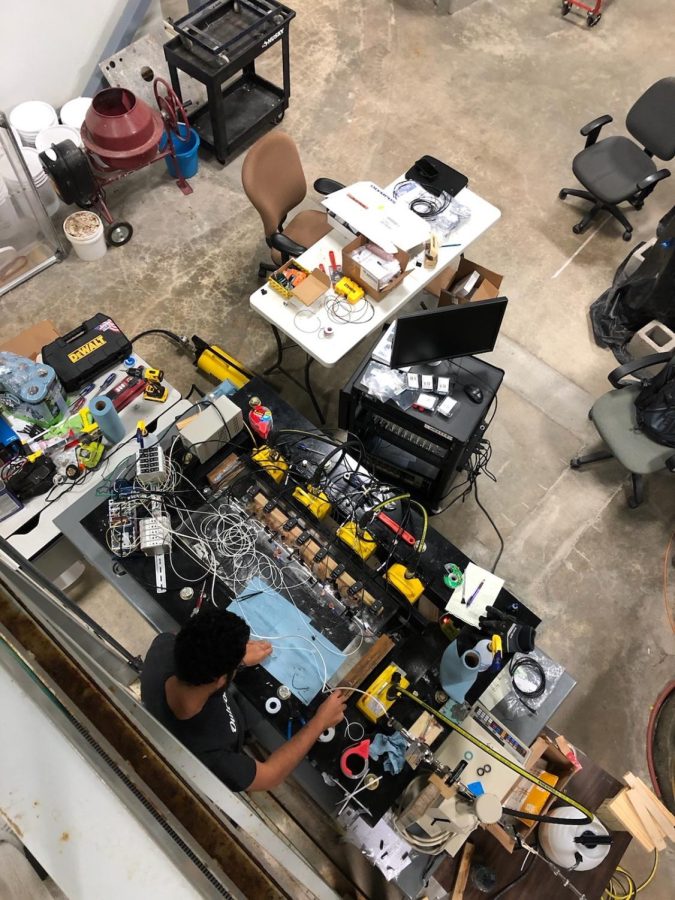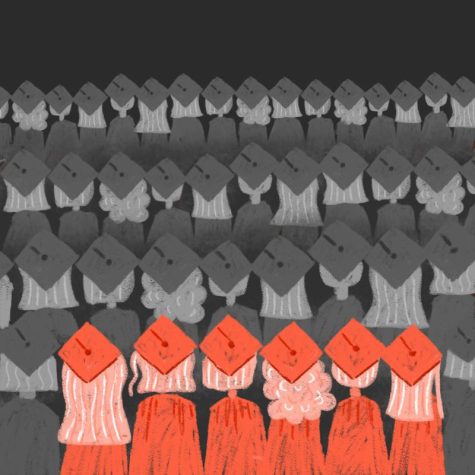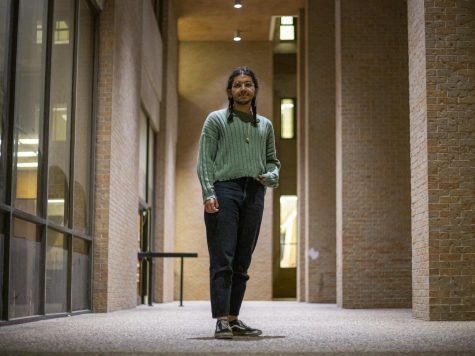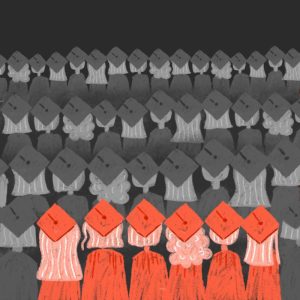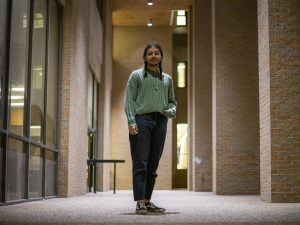New Earthquake Machine produces simulated earthquake on first test
November 30, 2022
The UT Earthquake Machine, a device built by UT scientists to simulate the shifting of the tectonic plates, made its first earthquake during its pilot test in a lab on Nov. 7.
The machine was created by the UT Institute for Geophysics in the Jackson School of Geosciences and simulates small-scale earthquakes in a controlled, lab environment. While creating the machine was an effort by a team of students and UT faculty, postdoctoral fellow Srisharan Shreedharan alongside Chas Bolton, a research scientist at the Bureau of Economic Geology, acted as the hands-on team for the project.
Bolton said the whole process took about a year to get to where they could finally simulate an earthquake.
“The initial idea started probably sometime last year at this time,” Bolton said. “We went back and forth maybe for a couple of months trying to figure out exactly how we want to design the machine and ordering all the parts that go along with it. There was some backlog because of the way things are right now and so we didn’t really start assembling everything probably until June.”
Shreedharan said the earthquake machine is made up of two main components. The first is a large-scale device that allows the researchers to study how rocks, faults and fractures form under realistic conditions. The other component of the machine records data from the simulation, such as different earthquake frequencies.
“In nature, it’s often not easy to observe all the systematics, all the features, all the properties of an earthquake, partly because you don’t know when and where it’s going to happen,” Shreedharan said. “So in the lab, by generating earthquakes in this large-format device, we’re able to control all these things.”
Bolton said how the machine will be used for educational purposes is still undecided, but the goal is to allow all types of students interested in the subject access to it to learn from it for their own research.
“We want to be able to make it accessible to anyone and everyone who’s interested in working on it, so I think we’re still kind of at the early stages of trying to iron out all the details,” Bolton said. “The idea would be to get students — undergrads and grad students — and postdocs who are interested in work in the lab interested in earthquakes, getting those folks interested in doing research there with the machine.”

